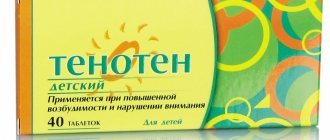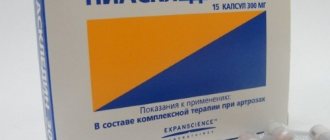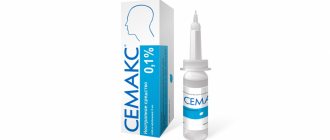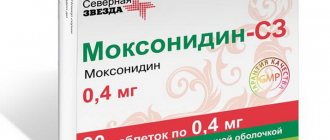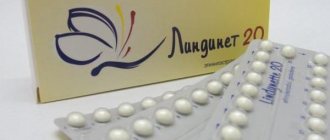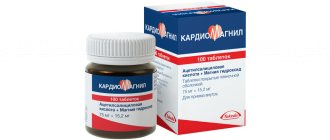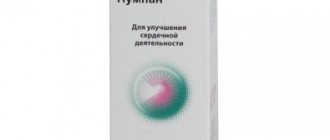6 positive
1 neutral
2 negative
- Write a review
Your rating for the drug:
(10 votes, average: 3.80 out of 5)
Sermion is a vasodilator drug that helps normalize peripheral and cerebral circulation. The main active ingredient is nicergoline. Penetrating inside the body, it improves rheological blood readings, metabolic and hemodynamic processes in the brain.
The drug is prescribed for chronic, metabolic and acute cerebrovascular insufficiency. When taken regularly, it normalizes the cognitive functions of the brain and reduces the manifestations of dementia. See instructions for use of the drug Sermion.
To form an idea of the degree of effectiveness and safety of Sermion, you should read the reviews of those who have taken the drug, as well as relevant specialists.
Sermion
A drug that improves cerebral and peripheral blood circulation, an alpha-blocker.
Nicergoline is an ergoline derivative that improves metabolic and hemodynamic processes in the brain. Reduces platelet aggregation and improves the rheological properties of blood, increases the speed of blood flow in the upper and lower extremities. It has an alpha1-adrenergic blocking effect, which improves blood flow. It has a direct effect on the cerebral neurotransmitter systems (noradrenergic, dopaminergic and acetylcholinergic), increasing their activity, which helps optimize cognitive processes.
As a result of long-term therapy with nicergoline, a persistent improvement in cognitive function and a decrease in the severity of behavioral disorders associated with dementia were observed.
Pharmacokinetics
Suction
After oral administration, nicergoline is quickly and almost completely absorbed.
Food intake or dosage form do not have a significant effect on the degree and rate of absorption of nicergoline. The pharmacokinetics of nicergoline when used in doses up to 60 mg is linear and does not change depending on the age of the patient.
Distribution and metabolism
Nicergoline actively (>90%) binds to plasma proteins, and the degree of its affinity for the α-acid of the glycoprotein is greater than for serum albumin. It has been shown that nicergoline and its metabolites can be distributed in blood cells.
The main metabolic products of nicergoline are 1,6-dimethyl-8β-hydroxymethyl-10α-methoxyergoline (MMDL, a hydrolysis product) and 6-methyl-8β-hydroxymethyl-10α-methoxyergoline (MDL, a demethylation product by the CYP2D6 isoenzyme).
The ratio of AUC values for MMDL and MDL after oral administration of nicergoline indicates a pronounced first-pass metabolism through the liver. After administration of 30 mg of nicergoline orally, Cmax MMDL (21 ± 14 ng/ml) and MDL (41 ± 14 ng/ml) were achieved after approximately 1 and 4 hours, respectively, then the concentration of MDL decreased from T1/2 13-20 hours. Studies confirm the absence of accumulation of other metabolites (including MMDL) in the blood.
Removal
Nicergoline is excreted in the form of metabolites, mainly in the urine (approximately 80% of the total dose), and in small amounts (10-20%) in feces.
Pharmacokinetics in special clinical situations
In patients with severe renal failure, there was a significant decrease in the rate of excretion of metabolic products in the urine compared with patients with normal renal function.
Opinions of neurologists and other specialists
In general, neurologists speak positively about the drug. It effectively eliminates unpleasant symptoms and quite rarely leads to adverse reactions.
psychotherapist
Gimadeeva G.F. (Positive feedback)
- Advantages: The drug is highly effective and rarely causes adverse reactions.
- Disadvantages: None found.
I prescribe it to my patients for cognitive disorders, high blood pressure and vascular pathologies. At a dosage of 10 mg three times a day, there is a significant improvement in general condition. The frequency of contractions of the heart muscle is normalized, memory and the ability to concentrate increase, blood pressure decreases and the head becomes clearer. It is tolerated quite well by patients. The duration of the therapeutic course is 1-2 months. I recommend taking two courses a year: one in the fall and one in the spring. Because at this time all chronic diseases usually worsen.
cardiologist
Svishchenko E. P. (Positive review)
- Advantages: In high doses (60 mg per day) normalizes cerebral hemodynamics, reduces platelet aggregation, helps restore impaired mechanisms of autoregulation of blood flow in the brain.
- Disadvantages: High level of effectiveness occurs at high doses.
In order to determine the degree of effectiveness of Semiron, we conducted a clinical study in standard and increased doses. The experiment involved patients (30 people) diagnosed with dyscirculatory encephalopathy, which progressed against the background of arterial hypertension. They were divided into two groups: in the first, the daily dose was 30 mg, and in the second, 60 mg. We used various methods to determine mental performance.
Before starting to use the drug, the patient experienced headache, memory loss, increased irritability, absent-mindedness, and dizziness. After the therapeutic course, patients from the second group had more pronounced positive results. In 9 people the headache went away completely, in 4 its intensity noticeably decreased.
Patients from the first group also noted an improvement in their condition, but the effect was less pronounced.
In general, the results of the study confirmed the beneficial effects of the drug on cerebral circulation, adhesiveness and platelet aggregation. Has a direct impact on indicators of psychofunctional status.
therapist and gerontologist
Korkushko Oleg Vasilievich (Positive review)
- Advantages: Does not cause side effects at standard and increased dosages, increases the volumetric velocity of blood flow.
- Disadvantages: None found.
A study was conducted in which 25 elderly patients took part. They were diagnosed with dyscirculatory encephalopathy of the second stage and ischemic disease. We divided all patients into two groups: with high blood pressure and with blood pressure within normal limits. During the study, we studied the clinical tolerability of the drug.
As a result, it turned out that in large doses Sermion is well tolerated by elderly patients and does not affect the heart rate. The drug helps reduce platelet aggregation activity and accelerates capillary blood flow.
See also:
Reviews of doctors and patients who took the drug Lozap® Plus
cardiologist
Morozov P.V. (Positive review)
- Advantages: Characterized by a wide spectrum of action.
- Disadvantages: None.
In the course of clinical studies, we found that the drug (hereinafter referred to as LP) exhibits a high degree of effectiveness in vascular dementia, chronic or acute abnormalities of blood circulation in the brain.
Acts as an alpha-adrenergic receptor antagonist, stimulates energy metabolism, modulates the metabolism of norepinephrine, dopamine and acetylcholine. Prevents the development of dementia and cognitive impairment in patients with atherosclerosis and arterial hypertension. Negative reactions occur quite rarely and are characteristic of drugs from the ergot class. They are of moderate severity and do not require additional treatment.
Research specialists
Mario Fioravanti and Leon Flicker (Neutral review)
- Benefits: Normalizes mild to moderate cognitive and behavioral functioning.
- Disadvantages: Elderly patients may experience negative effects.
A study was conducted to determine the appropriateness of the use of Sermion (nicergoline) in the diagnosis of dementia and age-related cognitive decline. The list of measured quantities included:
- Behavioral changes.
- Degree of functional efficiency.
- General impression of the drug.
- Admissibility of drugs.
- The quality of life.
- Mortality.
During the study, we used different evaluation methods and criteria. Upon completion, we determined that the main substance of the drug has a positive effect on behavior and cognitive functions. Some patients have reported associated side effects.
See also:
Reviews from neurologists and patients about Ginkgo Biloba®
Instructions for use SERMION
Nicergoline is an ergoline derivative that has an alpha1-adrenergic blocking effect. After oral administration, nicergoline is rapidly and extensively metabolized to form a number of metabolites, which also have effects at various levels of the central nervous system.
After oral administration, Sermion has various neuropharmacological effects, since it not only stimulates the uptake and subsequent utilization of glucose by brain tissue, enhances the biosynthesis of proteins and nucleic acids, but also affects various neurotransmitter systems.
Sermion improved the functioning of the cholinergic systems of the brain in elderly animals. Chronic administration of Sermion to elderly rats reversed the age-related decrease in acetylcholine levels (in the cerebral cortex and striatum) as well as the decrease in acetylcholine release (in the hippocampus) in vivo. After prolonged oral administration of Sermion, an increase in choline acetyltransferase activity and an increase in the density of muscarinic receptors were also observed. In addition, in both in vitro and in vivo experiments, nicergoline significantly increased acetylcholinesterase activity. In these experiments, parallel dynamics of neurochemical changes and persistent improvements in behavioral reactions were noted. For example, in a maze study, mature animals chronically treated with Sermion developed a response similar to that of young animals.
It was found that Sermion improves the state of the cognitive sphere in cases of cognitive deficiency caused by various factors (hypoxia, electroconvulsive therapy, scopolamine). When Sermion was taken orally in low doses, activation of dopamine metabolism was noted in elderly animals, especially in the mesolimbic region, which is probably due to the effect on dopaminergic receptors. Sermion improved the mechanisms of signal transduction in cells in elderly animals. Both after single and long-term oral administration of the drug, basal and agonist-sensitive phosphoinositide metabolism increased. Sermion also stimulates the activity and translocation through the cell membrane of calcium-dependent isoforms of protein kinase C. These enzymes participate in the mechanism of secretion of soluble APP (amyloid precursor protein), which leads to an increase in its release and a decrease in the production of pathological beta-amyloid, which has been demonstrated in culture human neuroblastoma.
Due to the antioxidant effect and activation of detoxification enzymes, Sermion protected nerve cells from death caused by oxidative stress and apoptosis in experimental models in vivo and in vitro. Sermion attenuates the age-related decline in NO synthase (nNOS) mRNA in neurons, which improves cognitive function.
Pharmacodynamics studies in humans
Pharmacodynamics were assessed in young and elderly healthy volunteers, as well as in elderly patients with cognitive impairment using computerized EEG. Sermion had a normalizing effect on the EEG of elderly patients and adults after hypoxia, which was manifested in an increase in α- and β-activity and a decrease in δ- and θ-activity. With long-term use of Sermion (for 2-6 months), positive changes were noted in the parameters of evoked response potentials in patients with mild to moderate dementia of various etiologies (senile dementia of the Alzheimer's type and mild intellectual disability), these changes correlated with improvement in clinical symptoms.
Based on the above, it is clear that nicergoline has broad modulatory effects on the cellular and molecular mechanisms involved in the pathophysiology of dementia.
In double-blind, placebo-controlled clinical trials, more than 1500 patients with dementia (Alzheimer's, vascular and mixed type) received nicergoline 60 mg/day or placebo. Improvements in dementia-related cognitive function and behavior have been observed following long-term use of nicergoline. Positive dynamics were observed after 2 months of treatment and the improvements achieved during therapy were maintained for one year.
Sermion reduces platelet aggregation and improves hemorheological parameters of the blood, increases the speed of blood flow in the upper and lower extremities.
